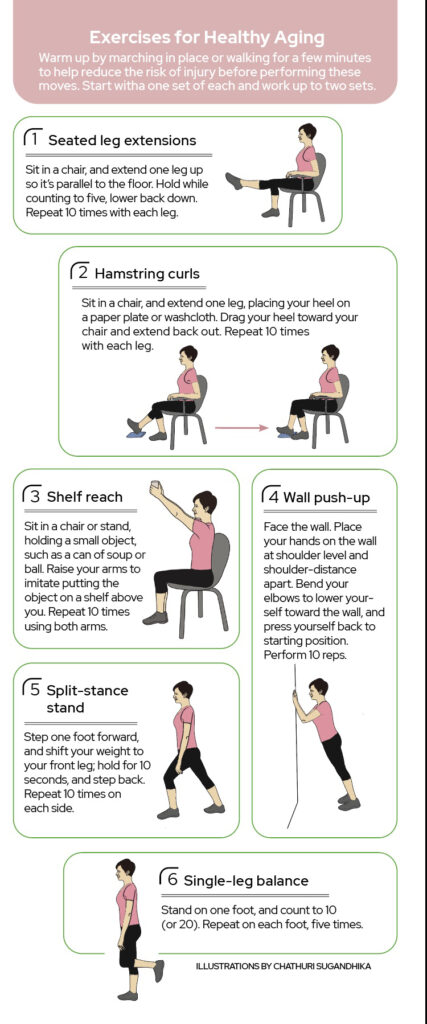How exercise builds strength and health for seniors
Whether we like it or not, losing some fitness with age is an inescapable reality.
Bones become more brittle. Muscular strength and endurance decrease. Vital organs don’t function as well as they did before.
“As we age, everything requires a little more energy and effort to achieve compared to our younger selves,” says Max Fitzgerald, MD, associate chief medical officer and medical director of rehabilitation services at Rush Oak Park Hospital. “Think about natural wear and tear — the more we use things, the more we deteriorate.”
Chronic conditions such as diabetes and arthritis also affect people’s ability to stay active. The more difficult it becomes to exercise, the less likely people are to do it.
“We have a lot of repair mechanisms that let you recover and reboot after an injury or after a workout. As you age, the process is slower, as we have fewer available resources to do that,” Fitzgerald says.
That’s the bad news. The good? Physical activity can offset some of these changes and slow the aging process.
Use it to not lose it
One of the best ways to get your body accustomed to exercise is to do exactly that: move.
“The more you are able to stay active and engage in movement and flexibility, the more you trigger your body to allocate resources to it,” Fitzgerald says. “When your body is engaging those cells — its natural defense against aging — it tells your body it needs to do this to function.”
In other words, use it if you don’t want to lose it.
Adults 65 and over should aim for at least 150 minutes of moderate-intensity exercise weekly, including two days of strength training and three days of balance training, according to the Centers for Disease Control and Prevention (CDC).
“Resistance training has a tremendous impact on bone health and muscular health,” Fitzgerald says. “And you can’t emphasize how important balance is, as fall risk increases every year with age.”
Activity that eases daily life
Seniors should focus on exercises that help them complete their daily living activities, whether that’s going to the grocery store, swinging a golf club, or playing with their grandkids, says Connie Truesdale, a personal trainer at Edward Elmhurst Health and Fitness Center. Truesdale has been training seniors for 25 years.
 Caregivers — whether they’re seniors themselves or not — should also make exercise a priority.
Caregivers — whether they’re seniors themselves or not — should also make exercise a priority.
“It’s important for both seniors and caregivers to exercise,” Truesdale says. “When you strengthen those major muscle groups, you are better able to take care of yourself and the person you love.”
Exercise can also lower depression and boost mood. “Doing something for yourself can empower you — and the more you empower yourself, the more happy and able to do other activities you’ll be,” Truesdale adds.
If you’re new to exercise, start small, and build from there. “Anything you can consistently engage in is a powerful way to promote fitness no matter how old you are, or whatever impairments you may have,” Fitzgerald says. “The guidelines are only guidelines. Don’t worry about meeting them — just start and go from there.”
